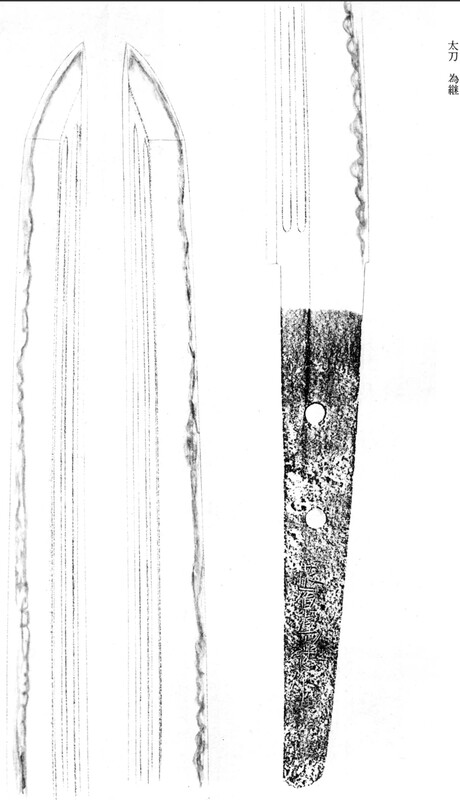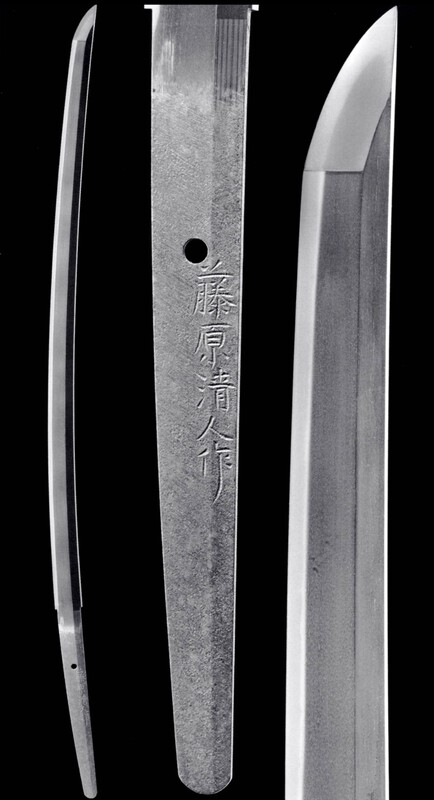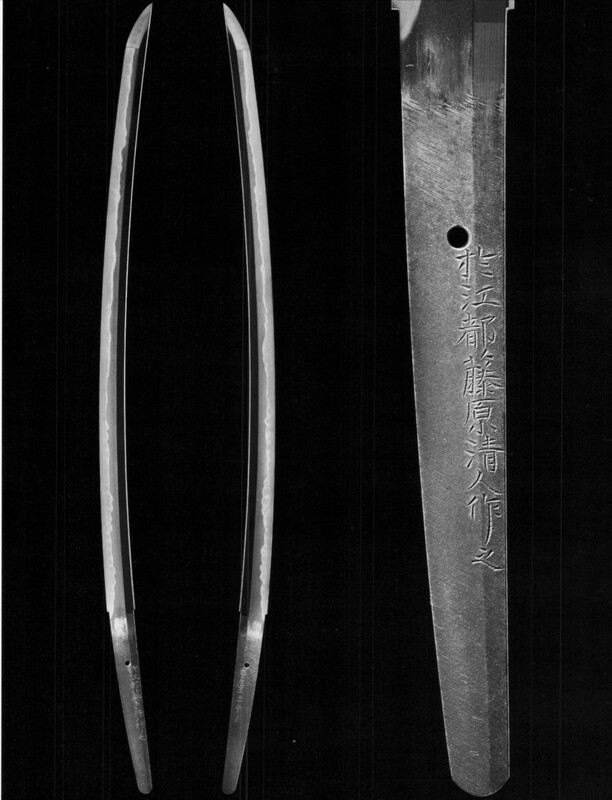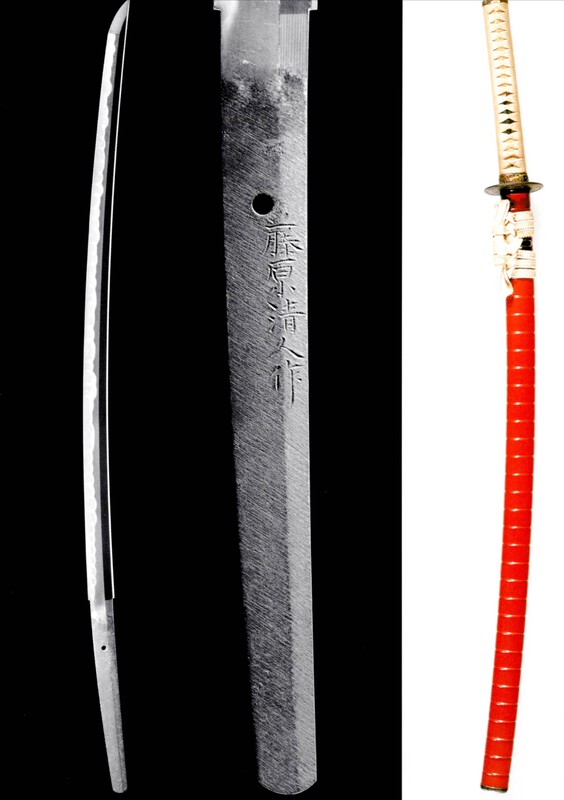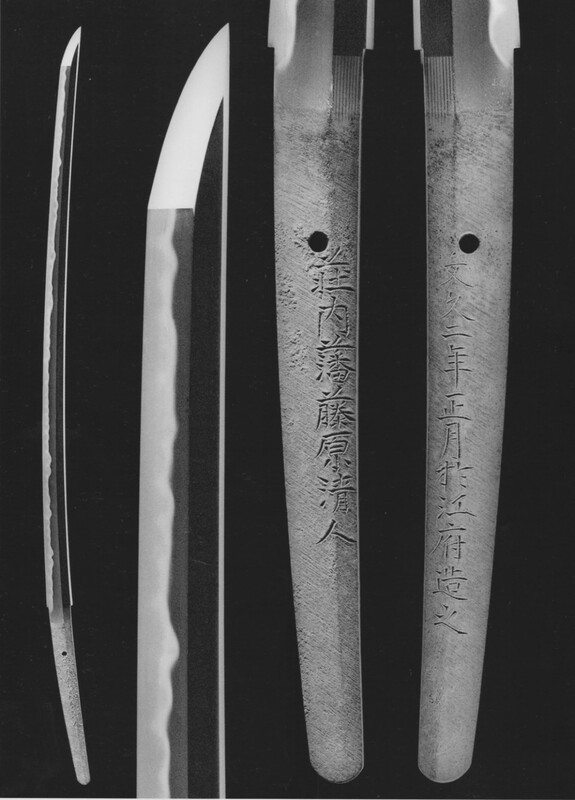-
Posts
1,903 -
Joined
-
Last visited
-
Days Won
20
Content Type
Profiles
Forums
Events
Store
Downloads
Gallery
Everything posted by Gakusee
-
John Yumoto’s and Basil Robinson’s books are a good very basic start together with Yurie’s and Markus Sesko’s (but the latter could also have advanced stuff, such as kantei by boshi or the kantei from the NBTHK magazine). I would leave Fujishiro, Nagayama, Honma/Sato (eg the translated Koza) for more intermediate and advanced studies. Tanobe’s Gokaden books. Etc. Then, for most advanced stuff, the various meikan, the particular school’s Taikan as well as the big Taikan, the Juyo Zufu, the NBTHK magazine. Here one could include all sorts of more advanced literature (eg the Kanto Hibisho, or Showa Dai Meito).
-
Some good books at very good prices.
-
Congratulations! Great outcome.
-

Shinsa decisions….justification?
Gakusee replied to Matsunoki's topic in General Nihonto Related Discussion
Hey Kiril, could you please specify if that kodachi was awarded a Juyo status? If so, firstly, congratulations and secondly - what was the Juyo judgement as to school / smith please. If I may, I would like to contrast it with the Kaga school you refer to in the NTHK comments. Thank you. -

Shinsa decisions….justification?
Gakusee replied to Matsunoki's topic in General Nihonto Related Discussion
Colin, it might seem unfair but that is one of the charms and secrets as to why it is such a coveted rank. Firstly, Juyo swords by definition are the ones which deserve it / qualify for it on qualitative, aesthetic, historic grounds and secondly they are additionally swords which happen to excel (in their tradition, time period, smith, school etc) in their category and be superior to others in the same category. So, there are two sets of criteria: absolute and relative. Sometimes swords fail on the relative set of criteria, even though they might otherwise qualify on the absolute set. If someone analyses the published swords in the Zufu which passed in the unfortunate shinsa that disappointed someone, that someone then can probably deduce why his / her sword failed: it could be that his failed Hizento just was 5cm shorter than the ones that passed, or his failed Kagemitsu was gakumei but the one that passed was ubu and zaimei, or that there were too many submitted Bizento and they have their statistical distribution to adhere to (and hence have to pass some Yamato, some Shinto, some Gendaito) which obliterates his otherwise top-notch Yosozaemon Sukesada, etc etc. Sometimes, we feel deprived and cheated but that is how it is. If we do not like it, we can always choose not to submit. But if you play the game, it helps to have an understanding of how it works. -
Hi Georg Please do not give up. It might be that they did not reach a consensus this time or there was a superior Kiyomaro in the line-up. I have had instances where an item failed a particular shinsa and then, the following time I submitted it, it passed. It has happened to me with koshirae and also with swords. It is a great sword one way or another.
-
Hi Jacques, I thought it made it clear in my post that the wakizashi was more in Mino style and described by the Ministry as made when he moved to Mino? I talked about the wider hamon (cf what Honma sensei wrote) and the word “Noshu” in the mei. Also, referencing the zaimei tachi, I qualified it as a transitional blade. One cannot say “this blade does not look Soshu” on the basis of only oshigata, as Soshu hamon could take lots of shapes just the way Mino can (even though Mino is much more specific). If you are looking only at the hamon of that tachi, you cannot definitively say that it looks pure Mino either. In fact it looks less Mino than something else. With Soshu, it is much more about the colour, the purity (and wetness) of the steel, the elegance of jinie, the presence or not of chikei (and also size), the way sunagashi and kinsuji show up (more elegant than the cruder Mino work). As you move into later Soshu (Hiromitsu, Akihiro et al), the elegance is starting to dissipate and we see some gaudier work. But the problem is all of this needs to be seen in hand an and oshigata cannot render it adequately.
-
Tametsugu (similarly to Shizu) is not a straightforward smith to put in a category. He moved from Echizen to Mino but maintained his “Northener” Etchu stylistic elements. The NBTHK says of him: “ As for his workmanship, Tametsugu’s jiba is quite nie-laden and we see a standing-out itame with nagare, a blackish steel, a notare-based hamon that is mixed with gunome and that features a very noticeable amount of sunagashi, and a bōshi with much hakikake. Thus, we recognize a mix of northern Hokkoku and Mino elements.” The Zufu entry for the zaimei blade Chris is referring to is attached. The text therein speculates that since it is signed with “Fujiwara”, it is therefore a bit similar in signature to the attached JuBi wakizashi, which is signed with “Noshu Fujiwara” and hence the tachi could possibly have been made after he moved to Mino (but more phrased as a question is how I understand it, rather than a statement). However, as always with Japanese swords, things are not straightforward. The hamon of the tachi does not “look” or feel (at least per the oshigata) stereotypically Mino-ish in nature (with the various symmetrical or pointy gunome features along the entirety of the blade). Per se, that is not an issue as early Mino did not have much symmetry or regularity (cf Naoe Shizu), even though one would expect perhaps more “pointy” elements than in this tachi here. Yet, this tachi seems to have gunome in there. Overall, the zufu setsumei of the Tametsugu tachi highlights the plentiful sunagashi and larger nie in the setsumei section, which I believe is what Chris is interpreting (together with the notare style hamon) as Soshu in style. Lastly, the JuBi setsumei of the attached wakizashi mentions that per Honma sensei the Mino yakiba of Tametsugu is larger / wider while the Echizen (ie more typical Go/Norishige inspired earlier ha style of Tametsugu) is narrower. So, here I believe we have an interesting transitional blade with a more Soshu hamon but a signature that indicates a time period closer to when he moved to Mino.
-
Kiril, thanks. On average, how many signed Kamakura Yamato swords do you come across annually would you say? A rough estimate is fine and the paper could be Hozon and up. You obviously go to various trade shows and buy/sell, so you are in midst of it. Thanks
-
I see. OK, I agree - people should not follow blindly but understand what is being said in context. Nagamitsu, Rai, etc - these are minefields and a lot of study, research and understanding is required.
-
Of course, one cannot take out of context private correspondence between Jean L and Darcy and just extrapolate..... I think the point is that overall proper Yamato (ie Koto) signed blades are rare. It almost does not matter how many there are (eg 100, 110, 120, 150, 200) - the population is very small. Jussi's numbers include Muromachi, which one can argue is a bit misleading. Mumei Yamato are way more numerous.
-
The post and comments that Jean L made referred to signed Yamato blades, and also of certain quality. There are plenty of mumei ones. At Juyo and above level, there are fewer than 170-180 (one needs to double check the entries but my rough count is reasonably accurate, perhaps +/- 5) and that includes some Muromachi stuff. If we are just focusing on Kamakura, then we are in the realm of 110-120. Unfortunately, it is almost impossible to know what the situation is at Hozon/ToHo, unless one has some insider connections into the Honbu and they double check their registers. But chances are that if an Yamato blade is a zaimei and of adequate quality, it will get elevated to Juyo, so the Juyo/TJ Zufu are very good proxy for the overall population.
-
The nakago has been reworked and is thinner than it probably was originally. That could explain some of the large hamachi remaining on the sword. The upper ana could have been the original one, indicating a potentially slight machi okuri. The lower, later ana was probably centred after the nakago had been reshaped.
-
???? https://to-ken.uk/Meetings/2018%20meetings.html
-
The blade subject to the original discussion is an honest, decent and genuine blade in acceptable polish. I am not sure what people are looking for in terms of polishing windows, etc. Everything is visible on the blade and in fact it is is in better shape than most blades found 'in the wild'. It can be appreciated as is. Often one needs to factor in not only the economic cost of a polish but also what can be gained in terms of [incremental] appreciation after the polish, and then all of that should be weighed against the removal of metal and diminishing the blade for posterity. Sometimes, it is just not to be done and the blade is best kept as it.
-
Alex, if I am not mistaken, you are trying to demonstrate that even if the hamon continues (or appears to continue) into the nakago, the sword might still (appear to) be ubu? The third one has a very pronounced change of direction and shape of the gunome, as though the smith was indeed putting a “full stop” or a separator …
-
Kiril, have you witnessed this first-hand? I know N Nakahara has done “educational” seminars in Europe but has he done these in the US? What were they like? Thanks. For information purposes, NN has a blog (in Japanese) in which he regularly postulates his views and some of the entries are quite interesting.
-
Some Hozon and ToHo papered Kiyondo. He was a skilled smith. Compare the chisel strokes and yasurime.
-
When Tsuruta says that he does “not guarantee the signature”, that is a polite way for him to indicate it is gimei. You need to buy with your eyes wide open.





